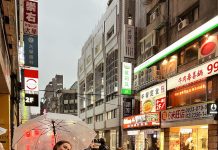On the heels of a frenzied summer air travel season, travelers are increasingly turning to drivable destinations as an alternative, with cities like Myrtle Beach, Virginia Beach, Daytona Beach, and Fort Myers coming up big.
RevPAR growth for those cities ranged from 7.8% to 19.5% in July 2022, with Myrtle Beach and Virginia Beach ranking second and seventh for RevPAR growth in the second quarter of 2022 respectively, according to Moody’s Analytics data. On the West Coast, San Diego and Anaheim also ranked in the top 10 in July.
The big exception is Hawaii: in July, Oahu logged an 18.4% increase in RevPAR from the previous month, “meaning that despite higher average daily room rates and inevitability of possibly having to contend with air travel disruptions in order to arrive to this tropical destination, travelers were not dissuaded,” Moody’s economist Ermengarde Jabir writes. “Leisure travelers appear undaunted by logistical upheaval and nowhere has this been more evident than in the latest TSA traveler throughput figures.”
The traveler recovery ratio, defined as the number of travelers on a given month and day this year compared to 2019 based on TSA passenger throughput data, surpassed 100% for the first time. While the ratio has since declined, “this summer’s traveler numbers are an extremely promising sign for the hotel sector: more passengers than ever travelling by plane translates to elevated hotel occupancy along with the willingness to pay higher daily room rates,” Jabir says.
CBRE recently projected hotel RevPAR will reach 2019 nominal levels by Q3 2022, in a move that accelerated the brokerage’s previous forecast of Q3 2023 by an entire year. The firm clocks average daily room rate (ADR) growth of 29.7%, a 41.8% increase in demand and a 75.06% increase in RevPAR this year nationally.










